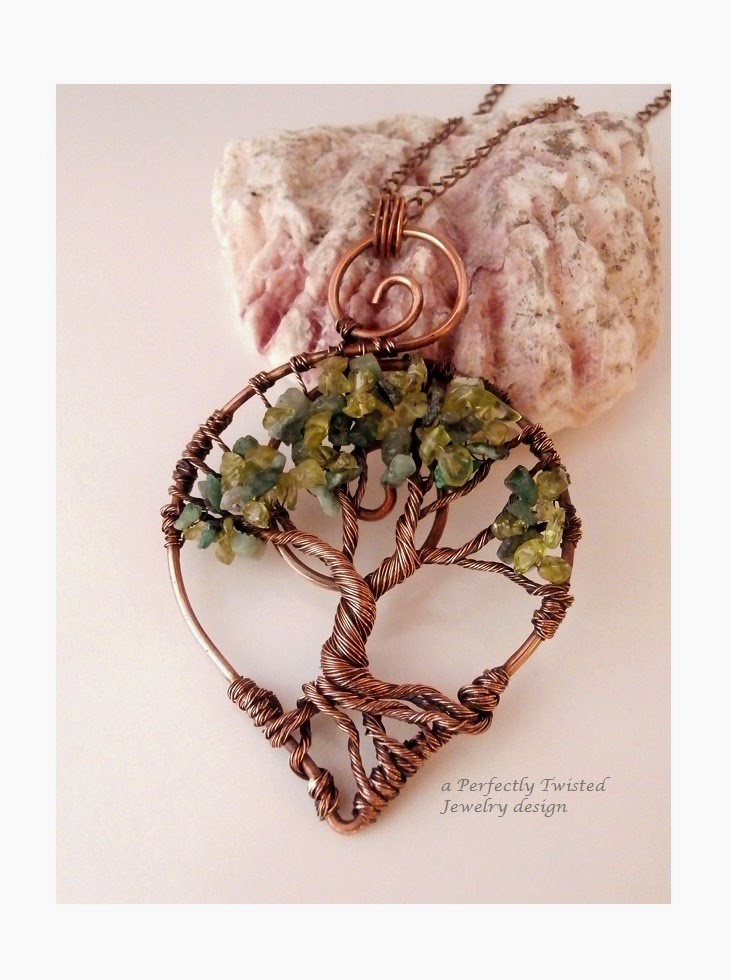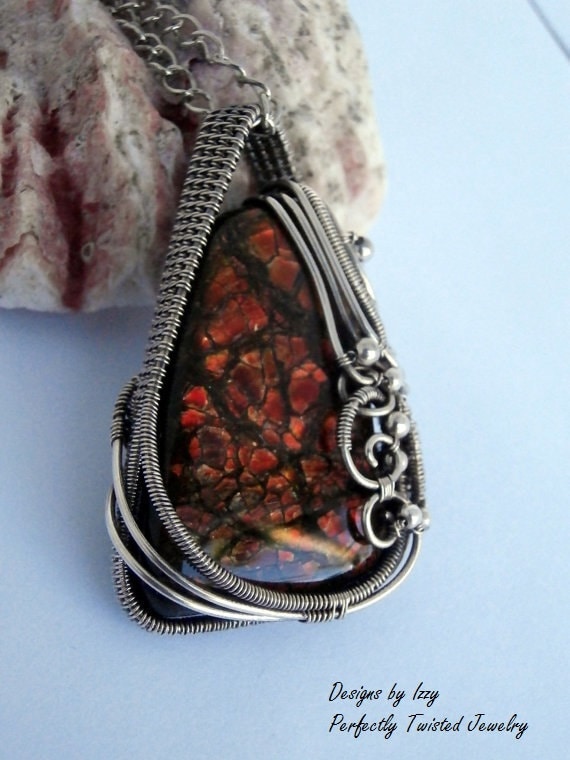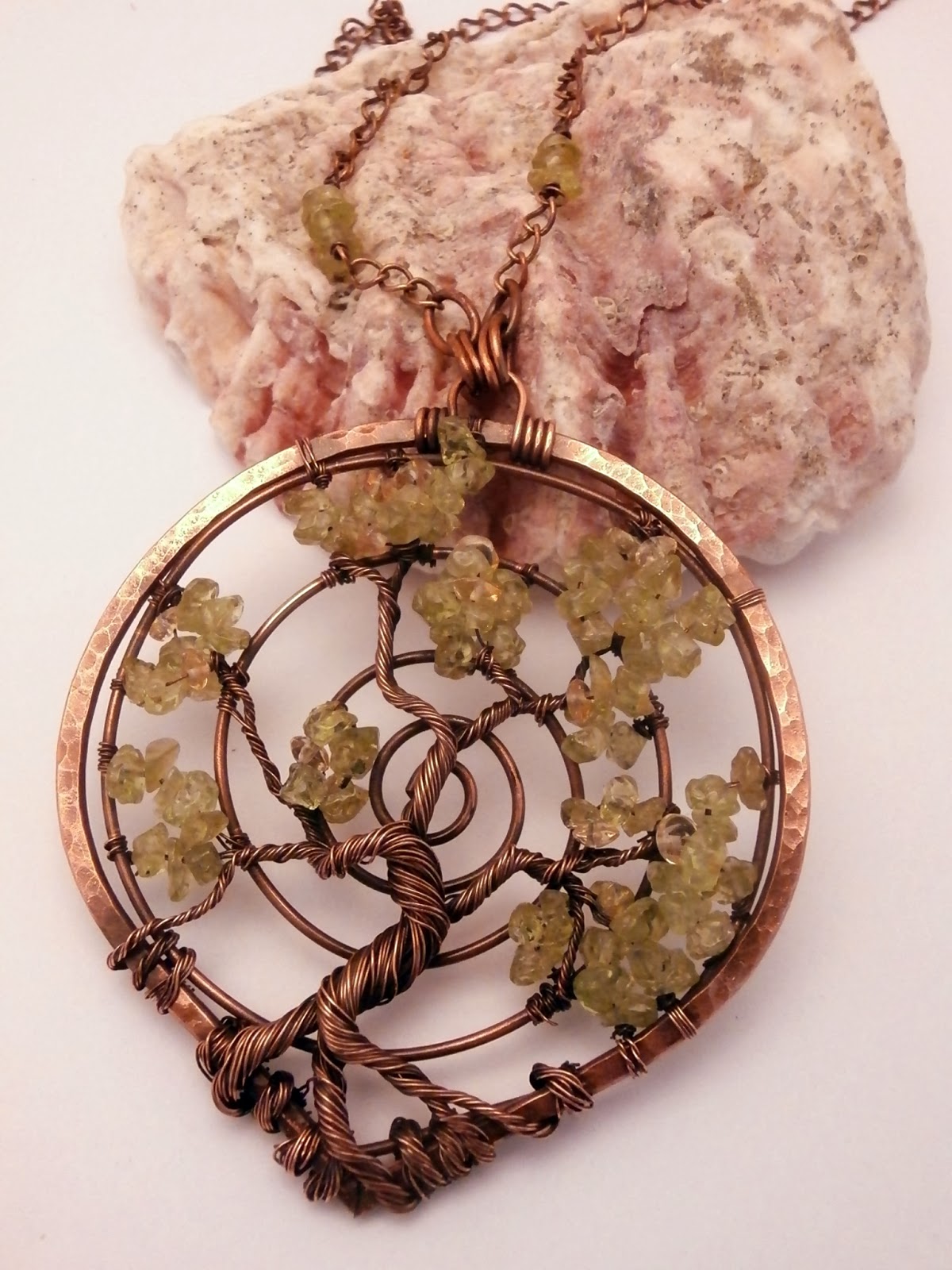I get many emails asking what it takes to get started in this beautiful art form. That's much more of a loaded question than one might realize as this art form, is about as endless as imagination itself. :))
Having said that, I've decided to give a post on what I consider to be the very basics and how to figure out exactly where that 'start point' might be.
First, I'll give you the 'short cut',
do it now, impulse driven, dive in method and then I'll describe the details of what it will take when you decide you're sticking with it.
It can be expensive to just dive in, considering there are tons of different tools that can be needed, depending on what type of jewelry you're interested in making. Rings for example, require a ring mandrel. Flattened wire requires a hammer and also then a steel bench block. Pendants require a dowel of some sort to create a bale.
So before you buy anything, if you're brand new to making wire jewelry,
- Think about what you want to make as your first project.
- Look at a ton of images on the internet for ideas and inspiration, get to know what you 'like', what you're drawn to, what excites you, to know what you might want to make.
- As you look at and are inspired by images, pay attention to tools and materials being used or
information on what it would take to create such a piece.
- See if there are 'additional skill sets' required to complete the desired project. You might need to solder for example and if that's more than you want to learn in order to create wire jewelry, then perhaps you need to consider a different project... OR put your mind to learning soldering too! ;)
- Learn a bit about the 'metal' and how the wire will behave. Wire comes in many gauges, shapes and tensile strengths, all good for different purposes.
- Learn what it takes to 'complete' a piece... does it require earring hooks? A pendant bale? Links, head pins, additional beads, chain, clasps?
Here are some links to my Pinterest galleries:
My Perfectly Twisted Jewelry for inspiration!
http://www.pinterest.com/izzygumbo/my-wire-jewelry/
Wire and Beaded Inspiration - A collection of other amazing wire & beaded jewelry artists and their works
http://www.pinterest.com/izzygumbo/wire-beaded-inspiration/
Wire Findings - A collection of 'beautiful finishes' on jewelry
http://www.pinterest.com/izzygumbo/wire-findings/
Be inspired by all the gorgeous beads and cabochon!
http://www.pinterest.com/izzygumbo/jewelry-supplies/
Look through free wire Jewelry patterns and tutorials:
http://www.pinterest.com/izzygumbo/jewelry-patterns-tutorials/
and remember to note the tools and materials needed (keep it simple to start with)...
Get the tools and supplies appropriate for your project. Start with simple materials, craft or copper wires rather than precious metals, beads with holes that are easy to work with. Visit your local hobby / craft store (Michael's or Hobby Lobby are awesome for beginner supplies). Purchase a starter tool kit which should contain wire cutters and various pliers, find some fun and beautiful beads and any findings needed if you're not making your own.
Get a flat table cleared, some good overhead lighting or a bright table lamp and a good chair. You're ready to dive in and just "make something!" You'll love it and you'll find it a quickly addicting sensation, especially when you put your beautiful wire jewelry on your body! The realization that you can make
more and make anything you want, washes over you and that's all it takes... you're ready for more information on how to turn this delightful hobby into a blissful and loved art form...
Getting Started for Real...
Tools for Making Wire Wrapped and Beaded Jewelry
Jewelry Measurement, Helpful Charts
Health and Posture at the Jewelry Table
Your Jewelry Work Space
Google and study up how to make wire wrapped jewelry. My ways are only my own suggestions based on my own experiences. I'm self taught via Google, Youtube and several months of hunting down free tutorials, plus a few I purchased. :))
Enjoy the exploration... there is a world of wonderful information out on the internet. Youtube offers many free jewelry making video tutorials, so look into them and enjoy! I have a link under the header of my blog page if you're interested. I've learned from the videos, I also scout out and update my links to other free tutorials offered by other artists. Be sure to check back with the Pinterest links above and my blog, for new content.
Have fun! I hope you found all this helpful.
Visit my Etsy jewelry store and shop for unique one of a kind, quality handmade wire jewelry!
https://www.etsy.com/shop/PerfectlyTwisted
While there, visit
my wire jewelry tutorials and learn to make more complex wire wrapped jewelry designs.


















































